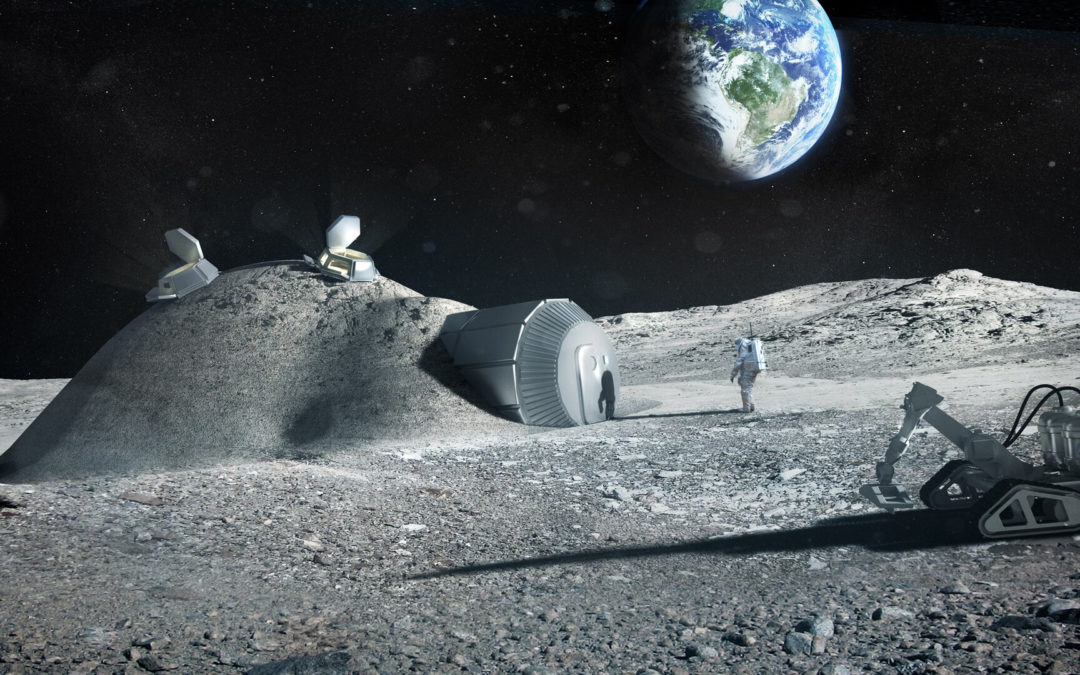Staying on the lunar surface for extended periods exposes astronauts to significant danger. They need to be protected from high radiation events like solar storms. Stays of a few days are likely to be safe, but the longer the stay, the greater the danger. The habitat MUST have protective shielding before people spend extended time on the surface. But launching enough shielding to provide protection would be unaffordable–it would take tens of tons to protect a single small shelter. So the smart way to provide shielding is to use the materials that are already there on the Moon–rocks and dust. But it would take humans a very long time to shovel and move that much material. It’s a classic chicken-and-egg problem. The solution: robots.
You rarely see an artist’s concept of a lunar base without a robot in it somewhere. The ESA image at the top of this post has one. It’s instinctive that it’s more sensible to prepare, build, connect, test, and protect lunar habitats with robots than relying entirely on human labor. In particular, moving that lunar material to build a shield is a perfect job for robots. It is dull and dirty.
Thirty years ago, NASA performed a study of what robots could and should do on the Moon to prepare for the arrival of humans:
https://ntrs.nasa.gov/archive/nasa/casi.ntrs.nasa.gov/19920011659.pdf
That study is now being updated at NASA’s Jet Propulsion Laboratory. One of the 1990 study’s key findings was that material shouldn’t just be piled directly on top of the habitat–there needs to be workspace around the habitat for making connections, performing inspections, and conducting repairs. How do we do that?
Recently, NASA asked for inputs from industry to understand what robots might be able to do for scientific measurements on the Moon:
https://beta.sam.gov/opp/14d4f43f22d94fd7b003e98b8e253c95/view?keywords=NASA&sort=-modifiedDate&index=&is_active=true&page=1
They also want industry’s help in developing a rover for human mobility on the lunar surface:
https://beta.sam.gov/opp/46cd587dcba34a8e96792f26d3c7a8d8/view
These inquiries do not address the questions about using robots to prepare for long human stays. How much material can a robotic vehicle move? What tools are needed? How is the robot to be controlled? What kind of support structure is necessary for the shielding? Where does the power come from? In an article in Aerospace America, I suggested that some of the answers could be obtained by having some robots for the early Artemis astronauts to work with:
https://aerospaceamerica.aiaa.org/departments/dont-forget-the-robots/
The new NASA RFIs are addressing other questions. It is time to work directly on the construction robots we’ll need by 2028 for a sustainable lunar habitat.


Recent Comments